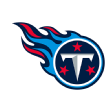Ricky Rubio and Rajon Rondo are doomed by their poor shooting
It's been written that the definition of a pass-first point guard is simply a point guard who can't shoot. More and more it seems like these "pure playmakers" are falling out of fashion in the NBA.
Just last season, one of the top assist men of the last decade was dealt when
Rajon Rondo went from Boston to Dallas. As we know now, that didn't end well. There were several reasons for that, but the most important on-court factor was that after acquiring Rondo, the Mavericks' offense, which was on a record-setting pace for efficiency, took a precipitous drop. Then after the season, the free-agent Rondo took what amounts to a one-year, make-good contract with a perennial lottery club in Sacramento.
Just last week, Minnesota's
Ricky Rubio became the subject of some
trade scuttlebutt.
While Rubio doesn't have a history of the kind of personality clashes that have plagued Rondo recently, he has a similar on-court profile: He's a skilled passer who dominates the ball yet doesn't shoot well on a consistent basis.
Whether or there is any smoke to the Rubio whispers, it does make you wonder if there is still a place in the league for players of that type. Rondo and Rubio, when healthy and playing at their best, both are multi-skilled players with positive attributes in a number of categories. Both can rebound at well above-average rates for their position. Both are solid defenders and particularly adept in playing the passing lanes. And both churn out assist opportunities at elite levels. But does wayward shooting negate these qualities in today's NBA?
Given the recent entry of similar players into the league in recent years like
Michael Carter-Williams and
Elfrid Payton, it's worth considering if such players still fit.
A brief history of poor-shooting playmakers
When the NBA was in its adolescence and teams played at a breakneck pace that made every game look like an All-Star game, the shooting efficiency of point guards was pretty much a non-issue.
Bob Cousy helped the Celtics to six titles and led the league in assists eight times. He also led the league in missed shots three times and finished second twice, per basketball-reference.com. Cousy is in the Hall of Fame.
In the late 1980s, Isiah Thomas led the Pistons to two championships but remained a streaky shooter who finished with a career effective field-goal percentage of .465. He's in the Hall of Fame too, and deservedly so. In recent years, Jason Kidd won a title with Dallas at age 37 and years earlier led New Jersey to two Eastern Conference titles.
Increasingly, that kind of success seems like an exception. Over the last five seasons, there have been 47 seasons in which a player averaged at least six assists per game but posted an adjusted effective field-goal percentage below .480. (The adjustments standardize the league rate at .490 to even out comparisons between seasons.) Kidd is the only one of those players to toil for a team that made the Finals.
More than half -- 24 of the 47 -- played for teams that missed the playoffs altogether. And if you have had one of these players on your team during the past half decade, there's an 81 percent chance you didn't advance beyond the first round.
What is the problem?
As the league has evolved towards an emphasis on floor-spacing and pick-and-roll play, point guards play a larger role than ever concerning offensive efficiency. Thanks to
SportVu tracking data, we can see this quantified: Point guards dominate the leaderboards in total touches and time of possession. Whether the degree of this domination is a new trend, we don't really know, since we only have the data for the past two years. But what we do know is that
point guards are producing more value, by WARP, than other positions.
For teams such as Houston and Cleveland, which don't rely on a traditional point guard to orchestrate the offense, these issues don't matter. That doesn't help Sacramento, Minnesota, Milwaukee or Orlando, who need to figure out how to rev up their offensive efficiency while featuring a primary ballhandler who doesn't shoot well.
Last season, Rubio ranked in the 74th percentile of all players in single-season offensive RPM, down from the 94th percentile the season before, when he played all 82 games. Rubio's RPM was a sterling plus-2.64 in 2013-14, when Minnesota's team offensive rating was 1.3 percent better than league average. His overall shooting percentages weren't much different except in one respect: He shot an average percentage on above-the-break 3s, and that was just enough to make teams pay for going under ballscreens.
For all he does well, Rubio just can't find a consistent peg in the shooting realm. He's not just an inconsistent jump shooter -- he's annually one of the worst finishers in the league, ranking in the 6th percentile at worst in the restricted area for three straight seasons, per nba.com/stats. Last season, he shot 31.7 percent at the rim. During the 3-point era, there have been 420 instances in which a qualifying player has recorded six-plus assists per game with an effective field-goal percentage under break-even. Rubio owns the two worst league-adjusted rates and three of the bottom five.
Meanwhile, Rondo's single-season RPM has been negative for three straight seasons and last season his multi-year RPM cratered to minus-3.55. The first of those years came before his knee injury, when he led the NBA in assists per game and posted his best true shooting percentage of the past half-decade. Yet even at peak productivity, Rondo was not having a positive impact on his teams' offenses.
While teams can overcome below-average shooting from their point guards, it's a matter of just how much poor shooting can be absorbed. The 270 3-point era players with six-plus assists per game and adjusted shooting rates at least two percent below league standards team played on teams whose corresponding offensive rating was 0.8 percent of below league average. League average, we remind you, is the dividing line between winning and losing.
So what can teams do?
Last season's trade that sent reigning Rookie of the Year Carter-Williams from Philadelphia to Milwaukee was evidence that this problem of wedging in a poor-shooting point guard is one some teams simply don't want to deal with. However, even in recent seasons, Rondo and Rubio have both been a part of some lineups that have performed well.
For Rondo, according to basketball-reference.com, there have been three lineups in which he's played at least 100 minutes while contributing to an offensive rating better than league average. Two of those came in Boston and one in Dallas. All of three featured a stretch big man and pick-and-pop partner: Kelly Oynyk in Boston and
Dirk Nowitzki in Dallas. All featured corner-shooting small forwards who can run the floor --
Jeff Green and
Richard Jefferson. Both featured undersized backcourt partners (
Avery Bradley and
Monta Ellis) that might have contributed to above-average pace factors.
In Sacramento, that's a combination that is somewhat doable.
DeMarcus Cousins isn't a stretch player by any means, but he has become a decent midrange pick-and-pop option in addition to his other skills.
Rudy Gay isn't a good corner shooter but he runs the floor and is decent above the break on 3s. And
Darren Collison doesn't defend as well as Bradley or Ellis, but on offense he can be a similar fit in some lineups. And we know that under George Karl, the Kings will play fast. More than anything, the Kings, in general, lack passing, and if Rondo is going to regain his standing around the league, Sacramento might represent his best possible chance to do so.
Rubio no longer has
Kevin Love to team with, but needs to stay on the court first and foremost. Doing so might help him recover some of his 3-point shooting, though at this point, you wonder if he's ever going to become consistent from other zones. He's a good isolation player, but the developing Timberwolves aren't building around him any longer.
The foundation in Minnesota is
Andrew Wiggins and
Karl-Anthony Towns, and younger point guards such as
Zach LaVine and
Tyus Jones lurk on the depth chart. It will be interesting to see what becomes of the likes of Rubio, Rondo, Carter-Williams and Payton in the next couple of years. Given the way NBA offenses go about their business these days, can a team win with a "pass-first" point guard?
Or can an innovative team learn how to build on what these guys do well? If the answers to both these questions is no, it might be hard for this kind of player to find work in coming years.




























